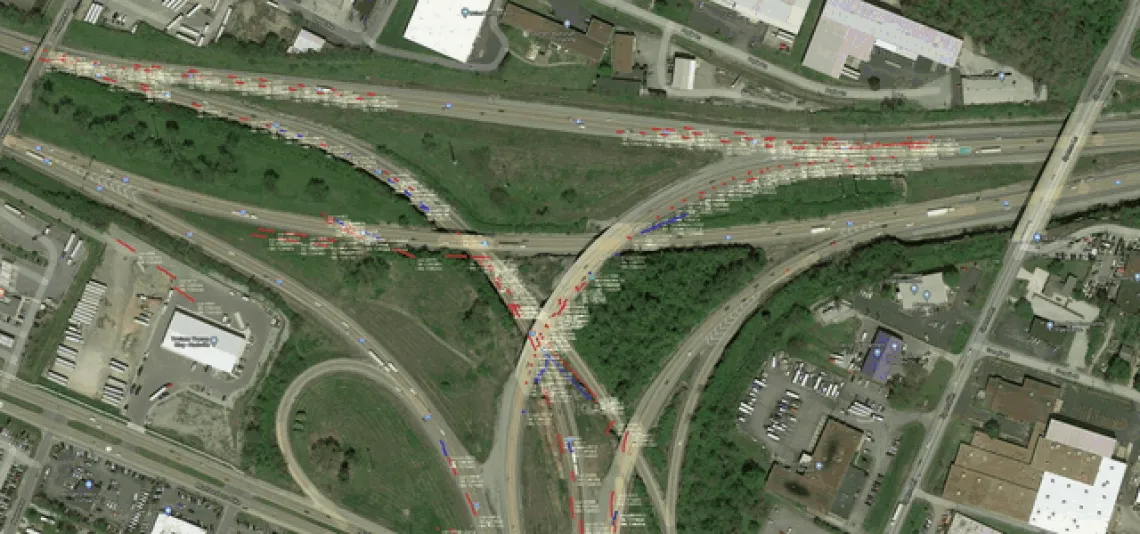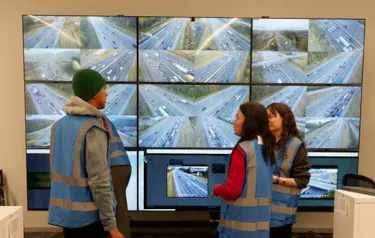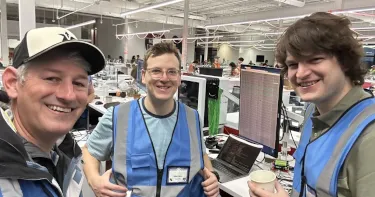CyVerse Assists AI-Powered Cruise Control Experiment
Research with AI-powered cruise control system aims to reduce energy consumption and improve traffic flow.

In November 2022, the CIRCLES Consortium conducted a five-day open track experiment to test an AI-powered cruise control system designed to reduce fuel consumption and improve traffic flow through testing 100 specifically equipped Nissan vehicles. The experiment was conducted on the newly opened I-24 MOTION testbed in central Tennessee, which is the only automotive testing environment of its kind in existence.

Preliminary vehicle and traffic flow detection in the I-24 Mobility Technology Interstate Observation Network [MOTION], (Credit: CIRCLES Consortium)
The goal of the CIRCLES team is to reduce instabilities in traffic flow, or what are termed "phantom jams," that result in traffic congestion and wasted energy. If you have ever experienced a traffic jam for no apparent reason, it may have been due to a phantom jam that naturally occurred due to human driving behavior.

Jonathan Sprinkle
Jonathan Sprinkle, a Professor of Computer Science at Vanderbilt University, said of the experiment, "It was the world's largest adaptive cruise control open road test in history. We had 100 cars on the road using our customized controllers that we had refined over time using the data we had gathered from cars previously. That was all made possible by the scientific workflows that CyVerse allowed us to explore from our Internet of Things [IOT] devices."
Sprinkle said, "We had data that was being recorded every time we drove a vehicle and that data was uploaded to CyVerse. Team members could log into CyVerse, process the data, use it to export interesting things that may have happened, and then take some of the data from the cars as input to reinforcement learning and artificial intelligence-based controllers.
The CIRCLES Consortium is comprised of Vanderbilt University, UC Berkeley, Temple University, and Rutgers University-Camden, in coordination with Nissan North America and the Tennessee Department of Transportation. Prior closed-course research by the team has shown that phantom jams can be reduced through autonomous vehicle technologies and specially-designed algorithms. The reduction of phantom jams and other negative effects could result in ≥10% energy savings, and the CIRCLES project hopes to apply this technology to real-world traffic.
The CIRCLES Consortium is comprised of Vanderbilt University, UC Berkeley, Temple University, and Rutgers University-Camden, in coordination with Nissan North America and the Tennessee Department of Transportation. Prior closed-course research by the team has shown that phantom jams can be reduced through autonomous vehicle technologies and specially-designed algorithms. The reduction of phantom jams and other negative effects could result in ≥10% energy savings, and the CIRCLES project hopes to apply this technology to real-world traffic.

Researchers consulting in front of I-24 MOTION monitors (Credit: Vanderbilt University)
Sprinkle said, "The computer in the car knew that when the car was being driven, it should record. It knew when I stop driving and turn off the car, it should upload my data to CyVerse. CyVerse gave us that repository to store data as well as the scientific workflow to remove privacy data that would have been included otherwise. So if a team member drove to and from their house, CyVerse had a separate process that would remove identifying data such as where they live. It also allowed us to be able to have people log in and run software that someone else may have written on the datasets that were residing on CyVerse."
The team's research has shown that a single AI-equipped vehicle could influence the driving behavior of up to 20 nearby vehicles, resulting in a beneficial ripple effect in everyday traffic. The team will spend several months analyzing data from the AI-equipped cars and their impact on traffic flow during the experiment.

Consortium team members from L-R: Jonathan Sprinkle, Matthew Nice, Matthew Bunting. (Credit: Jonathan Sprinkle)
Sprinkle concluded, "CyVerse epitomizes the canonical example of the idea that 'if your data is too big to bring to your computer, let's bring the computer to your data' and allow you to have some reproducible software. In the end, it was a tremendous benefit to our project to be able to use CyVerse, not just as a collective scientific repository, but also for the ability to have workflows that would operate the software after it was uploaded, so we knew that what we were giving people was meaningful.

